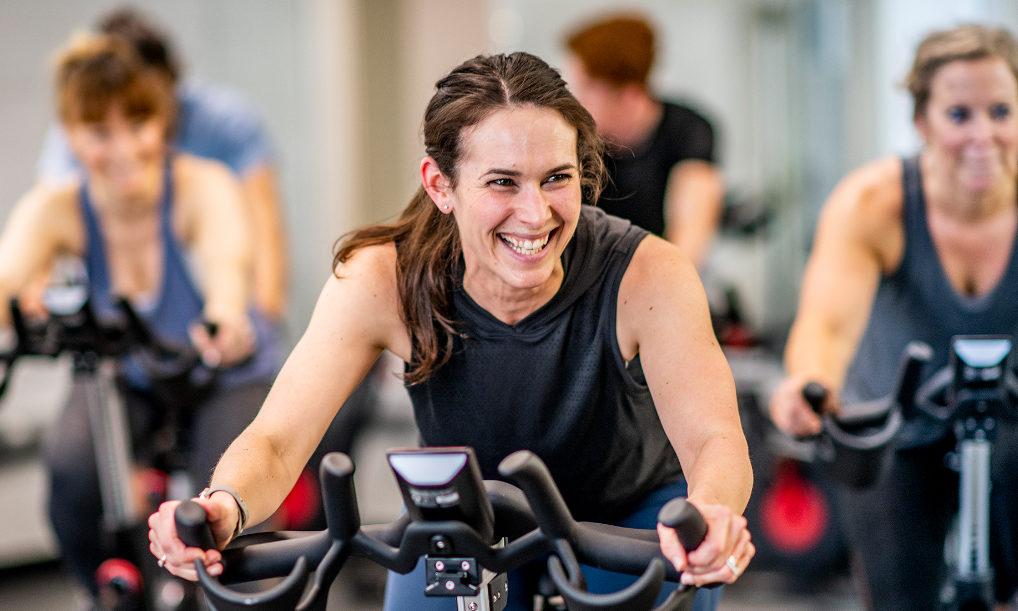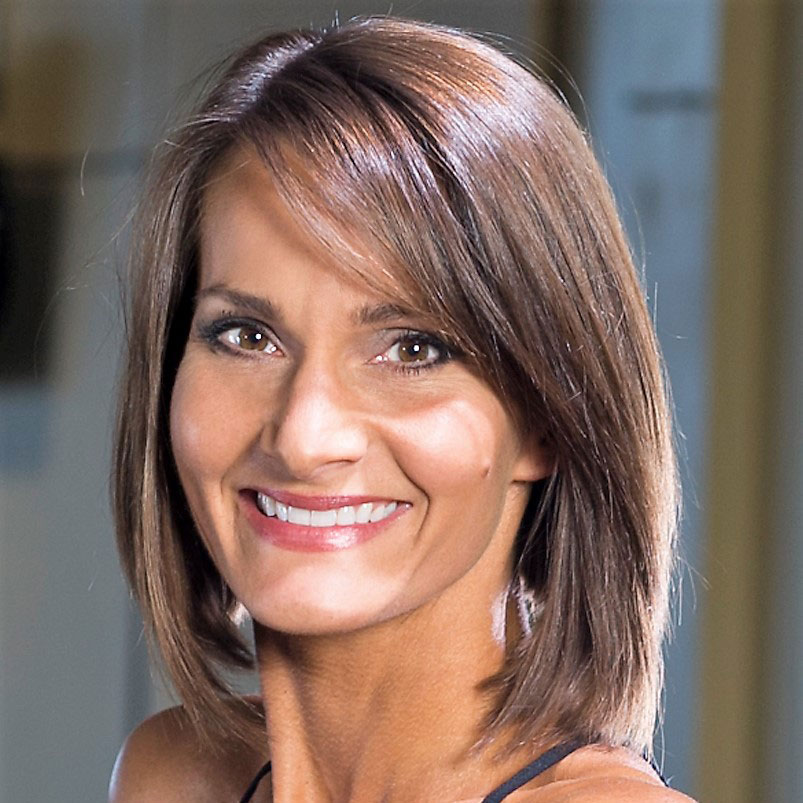Skill Acquisition – How to Become Your Best Self in the Fitness Industry

By Karyn Silenzi, canfitpro PRO TRAINER
Anyone who works in the fitness industry has an innate desire to better the world. We want our clients to move better, we want our members to feel better, and we, as trainers or group fitness instructors, always want to be better than we were yesterday. But how do you move from mediocre to creating magic in those interactions? It doesn’t happen overnight, and it takes a lot of reflection, both on what we did, what we can do, and what we need to change to improve those interactions. Here are some ideas on becoming the best fitness professional you’re able to be.
Step 1: Seek out a mentor
Engaging with a mentor can be a formalized event or an informal relationship. Think about all the people who influence you in the fitness professional arena; it could be a co-worker, an Instagram star, or a person you learn from on a Facebook fitness group. It doesn’t matter how long you’ve been in this game, someone is always doing something better.
Ask yourself what it is about what this person does that you admire so much. Is it how they interact with members around them? Is it how they are able to create flawless routines or provide training programs with ease? Is it the ease with how they talk, move, or look? Once you determine that, you’ll get a sense as to what attracts you to them, and chances are that will be the type of fitness professional you want to emulate. Once you have determined what it is, approach them with an opportunity to enter into a mentoring relationship.
Reach out and ask them if they have the time to sit down either on skype, Facebook, or face-to-face to talk about some key things. When it is time to speak with this person, make sure you have written down, and are ready to discuss, all relevant topics. You may only have one opportunity to talk to this person, or if you are lucky, you may have made a relationship where they encourage you to reach out to them again. But do realize that everyone is busy and have many things that need to get done in the same 24 hours. Be grateful for any and all opportunities to have someone share their work, thoughts, and insight with you.
It may feel awkward at first so try not to engage in a rapid-fire question and answer session. You will be amazed at the amount of knowledge and wisdom people are willing to share if you just sit back and be open to their experiences. Most people in this profession want others to succeed and people that mentor others have that desire x1000.
Don’t forget to show your appreciation for this person, either through public kudos, small tokens of your appreciation, or just letting them know how very important they are to you. Great friendships, working relationships, and business opportunities can grow from mentoring opportunities. Be prepared to give back. If you’ve ever worked with a mentor, you know how critical they have been in your success; the time will come when it’s your turn to lead others.
Step 2: Always be open to education and to learn from others
There is very little in exercise and movement that is brand new. HIIT training? It didn’t magically come into creation in the last decade. It’s been around almost 100 years, first used early in the 20th century and popularized later that century for improving performance of Olympic athletes. Those clamshells and fire hydrants we’ve been focusing on over the last 15 years to activate and stimulate the smaller gluteal muscles? Jane Fonda was doing those in leg warmers and leotards back when that was the style. We are constantly learning about, using, and adapting key biomechanical or physiological training methodologies. It’s a process and it takes time to lean in and learn all that you can. And it never stops. A person who suggests that they know everything there is to know about exercise has not hit their full potential.
If you truly want to become better at something, you have to immerse yourself. Seek out experience and information in the area that you would like to improve upon. Be prepared to invest time, money, and patience. Nothing worth having ever came easily. Become a voracious learner, seek experience and exposure, don’t be afraid to ask questions, and then put it into action.
One of the worst things that can happen is attending a weekend conference, listening to a number of amazing presenters, writing things down, and then doing NOTHING with what you’ve learned. Make a game plan for success – immediately after attending a session, take five or 10 minutes and record yourself doing or practicing three key take-a-ways. Commit that you will follow up and include these golden nuggets of ideas or exercises in your next few classes. Whether it’s a new move, a sound bite, or piece of information that you want to share with others, make sure you put it into one or more of your sessions over the next couple of weeks. Then, review your notes and pick out three other things. Wash, rinse, and repeat. We know that we build habits by repeating patterns, so start building yours in your quest for success.
Step 3: Reflect
After every single class you teach or group session that you run, reflect on three things that you felt went really well and three things that you feel could have gone a bit differently. There’s always something to be learned after every interaction, good and bad.
The things that you felt went really well – make a promise to do those again. It could be your music selection, a combination of moves, or a focal point that you made obvious to your group at the beginning of your time with them. Remember these successes and come back to them. You don’t always have to do it the exact same way. Find alternative ways to say the same thing. Or alter a combination using the same moves, or mark that song that everyone reacted well to and put it somewhere else in your next playlist. Not only does this help you to plan a flawless session for next time, but it is also a huge confidence booster.
The “do differently” list – these can be little things or big things. Before digging deep into this, I want you to first remove emotion from it. Too often, the fear of failure holds us back from becoming our amazing selves. Think about why it didn’t go as well as you wanted it to and how you might change that experience next time. This could be something as simple as, “I wish I had remembered to turn down my music in the cool-down section”. Or it could be something bigger, “My members really didn’t understand that combination of moves the way that I wanted them to. It seemed to go a lot smoother in my head”.
“You only have control over three things in your life – the thoughts you think, the images you visualize, and the actions your take.”~ Jack Canfield.
All too often I hear instructors or trainers talk about how they failed at something. It’s not a failure. The experience just didn’t turn out the way that you wanted or hoped it would. Once you’ve removed the emotional attachment to it, dig a little deeper to find out why it didn’t work. Could you have been clearer in how you explained it? Was it too advanced for the people who were in your class or group? Was it just a bad idea in the first place? We learn when we fail just as well as we can learn when we win. Make a conscious effort after every session or class you teach to think about this. You can write it down or you can keep a mental checklist in your head. But, as at the beginning of creating any type of habit, making it more of a formalized process will lead to consistency in this respect.
Step 4: See yourself how others see you
This is perhaps the hardest step. Video record or audio record yourself teaching a live session – don’t worry, everybody hates something about themselves. It could be the sound of your voice, something that you say multiple times throughout class, or the way you don’t like how your mouth moves when you speak. Take the time to review the class as if you were an evaluator.
Often, all of our attention and focus is on the people in front of us, and we forget about what we look and sound like. Once or twice a year, step back and see yourself as others do. How you move, how you cue, and how it was received. What were you able to accomplish? Was your class focus clear? Did you have positive and motivating interactions with clients? How was your form? Were your cues clear and varied? Did you provide a good workout?
Once you have evaluated yourself, be prepared to send that recording to a trusted mentor or work colleague so that they can do the same. This is where you need to harden up. We’re all okay being a little self-critical, but if that criticism comes from another individual, we need to accept it with grace. Check to see if there were areas of overlap, indicating you could spend a bit more time polishing that part of your class. If your self-evaluation and their evaluation points were significantly different, time to dig in and see how your perception is that much different from others. I do evaluations on several instructors each year. Some have been teaching three months, some have been teaching 30 years. It doesn’t matter how much your class or your people love you, there is always room for improvement. Often it’s something quite small or simple. Other times you may need to go back to the drawing board and change something that you’ve been doing for a long time. Be open to feedback and be prepared to change things going forward. Break the bad habits and build the ones that will lead you to success.
Step 5: What works for one may not work for another
Trying to change the essence of who you are will only leave you feeling like an imposter. Look at what makes you different from every other trainer or instructor and see if you can capitalize on that. We all bring something unique to the table and others are drawn to that. Find what makes you so….YOU! It could be your personal journey, your hopes and fears, your crazy outfits, or your myriad of experience. There is no such thing as a perfect instructor or personal trainer. We are all relatable in our own way. But once you have determined that, you can build your raving fan base and create additional opportunities for yourself.
At the end of the day, we are fitness professionals, but we are also ‘edutainers’ – educators and entertainers. People come to us for the experience and connection and that means you need to figure out what will keep them coming back. It’s a wonderful journey we are all on and we are fortunate to be here. Our lives are well served by constantly seeking out the opportunity for growth and additional skill acquisition.

